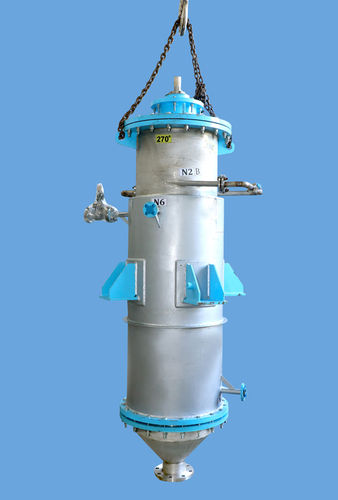GST Number - 24AAICB8818J1ZE

Stainless Steel Vapor Separator
1 INR/Plant
Product Details:
- Product Type Vapor Separator
- Color Sliver
- Usage Industrial
- Condition New
- Material Stainless Steel
- Construction Box Filter
- Filtration Grade Ulpa Filter
- Click to view more
X
Stainless Steel Vapor Separator Price And Quantity
- 1 INR/Plant
- 100 Paint
Stainless Steel Vapor Separator Product Specifications
- Box Filter
- Sliver
- Vapor Separator
- Industrial
- Stainless Steel
- Ulpa Filter
- Cylindrical
- New
Stainless Steel Vapor Separator Trade Information
- Cash Against Delivery (CAD) Cheque
- 10000 Paint Per Day
- 1 Days
- Yes
- Free samples are available
- North America South America Eastern Europe Central America Middle East Asia Australia Western Europe Africa
- Andhra Pradesh Maharashtra Odisha Andaman and Nicobar Islands Madhya Pradesh Karnataka Jharkhand Assam Chandigarh South India Daman and Diu East India Nagaland Bihar Kerala Punjab Dadra and Nagar Haveli North India Goa Gujarat Himachal Pradesh Uttar Pradesh Rajasthan Jammu and Kashmir Meghalaya West India Delhi Manipur Arunachal Pradesh Tripura Haryana Chhattisgarh Sikkim Mizoram Tamil Nadu Telangana Lakshadweep Pondicherry Central India All India
Product Description
A stainless steel vapor separator is a specialized device used to separate vapor from liquid or solid phases in various industrial processes. It s commonly employed in applications where high purity and resistance to corrosion are essential. Here s an in-depth description:Components and Construction:
1. Material:
- Stainless Steel: The separator is constructed from stainless steel, which provides excellent corrosion resistance, durability, and cleanliness. This material is ideal for handling aggressive chemicals or high-temperature applications.
- Inlet: The entry point for the mixed vapor-liquid or vapor-solid stream.
- Outlet: The separate outlets for vapor and liquid (or solid) phases after separation.
- Design: The chamber is designed to allow for the effective separation of phases. It often includes features like baffles, trays, or mesh to aid in the process.
- Flow Dynamics: The chamber design promotes the movement of phases in a way that allows for effective separation. The flow path and internal structures are optimized for efficiency.
- Cyclonic Separation: Uses centrifugal forces to separate vapor from liquids or solids. The mixed stream is spun in a cyclone chamber, causing heavier particles to be thrown outwards, allowing the lighter vapor to rise.
- Gravitational Separation: Relies on gravity to separate phases, where the heavier phase settles at the bottom and the lighter phase rises.
- Filtration: In some designs, mesh or filters are used to capture solid particles from the vapor stream.
- Sensors and Gauges: Monitor pressure, temperature, and flow rates to ensure optimal operation.
- Automatic Valves: Regulate the flow of vapor and liquid to maintain separation efficiency.
Applications:
- Chemical Industry: Separates vapors from liquid chemicals or solvents in processes such as distillation or evaporation.
- Petrochemical Industry: Used in refining processes to separate vapors from heavier hydrocarbon fractions.
- Pharmaceuticals: Ensures the separation of active pharmaceutical ingredients from solvents or other phases.
- Food and Beverage: Separates vapor from liquid in processes like alcohol distillation or essential oil extraction.
Benefits:
- Corrosion Resistance: Stainless steel construction ensures long-term durability even in harsh chemical environments.
- High Purity: Provides high-quality separation, which is crucial for applications requiring strict purity standards.
- Durability: Designed to withstand high pressures and temperatures, extending the life of the equipment.
- Ease of Maintenance: Stainless steel surfaces are easy to clean and maintain, reducing downtime.
Considerations:
- Cost: Stainless steel construction can be more expensive than other materials, but its durability and performance often justify the investment.
- Design Complexity: The design of the separator must be carefully tailored to the specific application to ensure effective separation.
Tell us about your requirement

Price:
Quantity
Select Unit
- 50
- 100
- 200
- 250
- 500
- 1000+
Additional detail
Mobile number
Email




